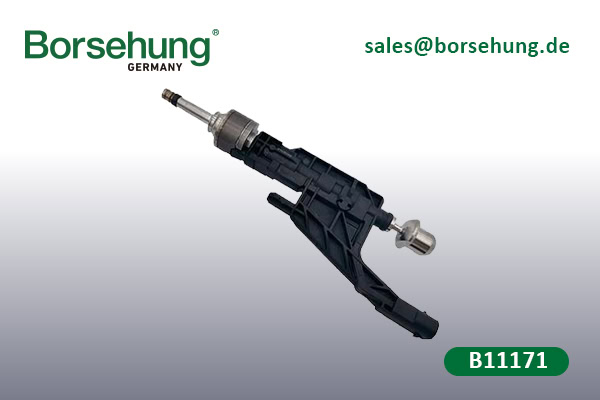Carbon deposition on fuel injection nozzle is a common failure symptom during the use of a car. It is mainly caused by low fuel quality, bad driving habits, unfavorable engine operating conditions, and other reasons.
Main reasons for carbon deposition on a fuel injection nozzle:
- Use of low-quality fuel:
Impurities and colloids: Low-quality fuel contains a lot of impurities and colloids. After combustion, their residues adhere to the surface of the fuel injection nozzle, gradually resulting in carbon deposition.
Non-compliant octane number: Low-grade fuel has poor anti-knock performance and can accelerate carbon deposition due to incomplete combustion. - Low-temperature operation of the engine for long
Short distance/low-speed driving: Frequent short distance drives (e.g., for urban commuting) can prevent the engine from reaching its optimal operating temperature, resulting in insufficient fuel atomization and low combustion efficiency.
Frequent cold start: During cold start, the ECU uses denser fuel for injection, leading to excessively dense mixture and residual unburned hydrocarbons. - Working environment of the fuel injection nozzle
Characteristics of direct injection engine: The fuel injection nozzle for a gasoline direct injection (GDI) engine is directly exposed to the high temperature in the combustion chamber, making it more susceptible to high-temperature carbonization.
Poor fuel atomization: A blocked or aged nozzle can lead to poor fuel atomization, and result in carbonization and deposition of incompletely combusted fuel. - Problems of the air intake system
Air filter blocking: Insufficient air inflow due to air filter blocking can lead to excessively dense mixture and insufficient combustion.
EGR valve malfunction: If the exhaust gas recirculation system fails, particulates in the exhaust gas will flow back to the combustion chamber and cause heavier carbon deposition. - High temperature in the combustion chamber and impact of oil
Poor heat dissipation: The high temperature of the engine can cause early fuel carbonization near the fuel injection nozzle.
Oil vapor ingress: If the PCV valve fails or the oil seal of the valve ages, oil vapor will enter the combustion chamber and participate in combustion, generating coke-like carbon deposition. - Lack of regular maintenance
Cleaning agent is not used: With a lack of cleaning agent for the fuel system for long, the initial carbon deposits can’t be dissolved.
A too long replacement cycle: If the fuel injection nozzle has exceeded its designed service life, internal wear can lead to less efficient atomization.

Consequences of carbon deposition on a fuel injection nozzle:
- Weaker power: Inaccurate quantity of fuel injection can result in abnormal mixture concentration.
- Higher fuel consumption: The ECU will try to increase combustion efficiency by increasing fuel injection, thus leading to a vicious cycle.
- Excessive emissions: The emissions of unburned hydrocarbons (HC) and particulate matters (PM) will increase.
- Difficult start: Severe carbon deposition may block the fuel injection nozzle completely.
Measures for preventing and solving carbon deposition on a fuel injection nozzle:
- Choose high-quality fuel: Fuel up at qualified gas stations to avoid use of low-priced and inferior fuel.
- Use additive regularly: Add cleaner (preferably with PEA ingredients) every 5,000 kilometers.
- Avoid frequent short-distance drives: Drive on highways or at high speeds adequately every month to remove carbon deposition.
- Maintain the air intake system: Replace the air filter regularly, and check the operation condition of the EGR valve.
- Perform professional cleaning: Disassemble and clean the fuel injection nozzle every 20,000 to 30,000 kilometers, or use ultrasonic cleaning equipment.
- Check operating conditions of the engine: Solve issues caused by high temperature and oil burning promptly through repair to reduce the risk of carbon deposition.

